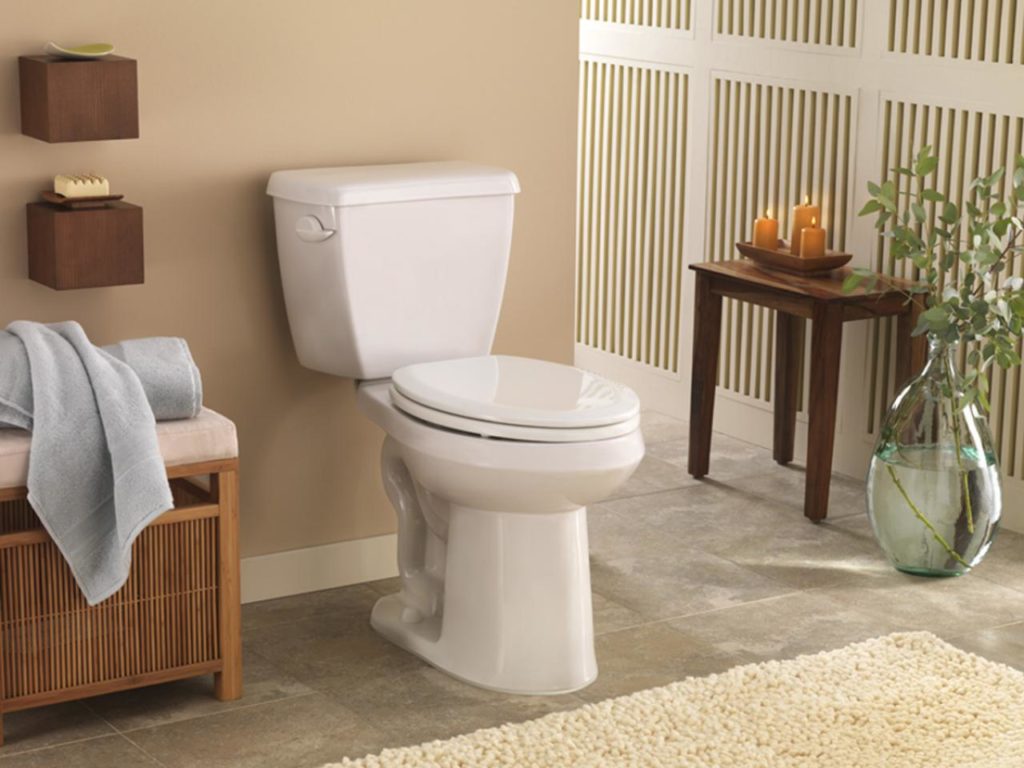You walk into your bathroom and sit on the toilet, only to feel a cold, wet sensation on your bottom. You look down and see that the toilet is sweating! What is going on? Is your toilet sick? Don’t worry; you’re not the only one with a sweaty toilet. This happens to many people, and it’s called toilet sweating. In this blog post, we will discuss what causes this phenomenon and how you can stop it from happening!
What does it mean to have a sweaty toilet?
As comical as it sounds, toilet sweating is actually a real phenomenon! It occurs when the surface temperature of your toilet bowl drops below that of the surrounding air, and condensation forms on it. This can happen in warm and cold climates, although it’s more common in warm areas because there is more moisture in the air. The sweat droplets come from the evaporating water in the tank and form on the outside of the bowl since it’s colder than the air around it.

What causes toilet sweating?
The main cause of toilet sweating is high humidity levels in your bathroom and poor ventilation. When there’s too much moisture in an enclosed space, like a bathroom with no ventilation, this can lead to condensation forming on surfaces like your toilet bowl. This is especially true if you are running hot water in the bathroom and the windows are closed. Also, if your toilet tank is made of metal or plastic, it will absorb more heat than a ceramic one and worsen the condensation.
How can you prevent toilet sweating?
The best way to prevent toilet sweating is to reduce humidity levels in your bathroom. You can do this by opening a window or running an exhaust fan when you shower or bath. Additionally, insulating your toilet tank with foam insulation or using a tank liner can help keep temperatures consistent and reduce condensation. If all else fails, you can buy anti-sweat wraps around your toilet bowl to help trap moisture before it forms droplets. In addition, here are a few other tips that can help prevent toilet sweating.
Read Article: The dangers of undetected mold infestations
Warm up your toilet: No, we aren’t messing around. Insulating the tank is one of the best ways to prevent sweating with your toilet. Insulating the toilet tank can help keep the temperature of the toilet bowl consistent and reduce condensation.
Use an exhaust fan: Bathroom fans are great for reducing humidity levels in your bathroom, so ensure you run one when you shower or bathe. This will help keep excess moisture out of the room and lower the risk of toilet sweating.
Fix any plumbing leaks: A leaky pipe near or around your toilet could cause extra humidity, leading to condensation in your bowl. So have a professional plumber inspect and repair any plumbing leaks in your bathroom.
Clean the toilet regularly: Cleaning your toilet once a week will help remove excess dirt and dust particles that can trap moisture and lead to condensation on the bowl.
Open a window: Opening windows when you shower or take a bath will help keep humidity levels low since it allows air circulation from outside. This is especially helpful if you live in an area with high humidity outside.
Purchase an anti-sweat wrap: If all else fails, then anti-sweat wraps can be used to wrap around the exterior of your toilet bowl to prevent the formation of droplets on its surface. These wraps use insulation technology to trap moisture before it forms condensation.
Reduce the amount of water in the tank: The logic behind this is simple. The less water in the tank, the less it will sweat. To reduce the amount of water in the tank, you can adjust the float valve setting or get a new low-flow toilet.
Check the flapper valve: A flapper valve is a device that seals the toilet tank and allows water to fill it when flushed. If the seal is loose or broken, this can cause extra moisture in the tank and lead to condensation. So make sure you check your flapper valve frequently and replace it if necessary.
Use a drip tray: A drip tray comes in handy for catching water droplets on the toilet bowl. These trays can be placed underneath the toilet and should be emptied regularly to reduce the amount of moisture in your bathroom.

In conclusion, toilet sweating is an annoying but common problem. Luckily, there are several steps you can take to help prevent it from happening, such as insulating the tank, using an exhaust fan, fixing any plumbing leaks, and cleaning the toilet regularly. Opening windows or purchasing anti-sweat wraps can help trap moisture before it forms droplets on your toilet bowl. With these tips in mind, you should be able to keep your bathroom comfortable and sweat-free!






